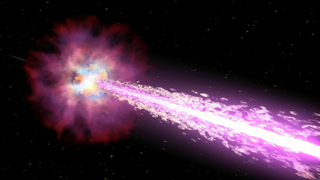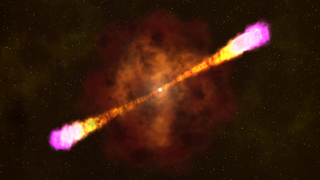Universe
ID: 12038
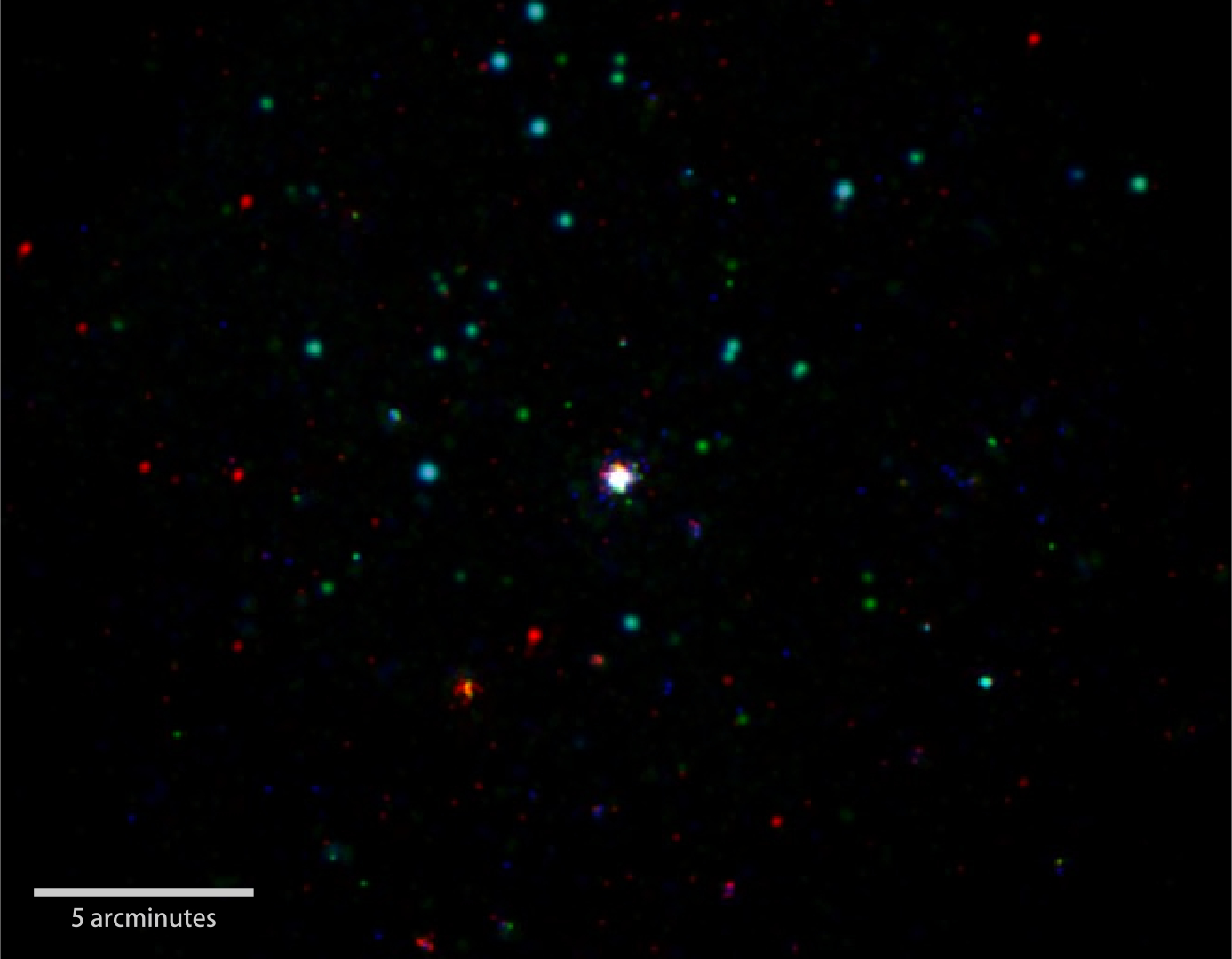
NASA's Swift spacecraft has detected its 1,000th gamma-ray burst (GRB). GRBs are the most powerful explosions in the universe, typically associated with the collapse of a massive star and the birth of a black hole.
A GRB is a fleeting blast of high-energy light, often lasting a minute or less, occurring somewhere in the sky every couple of days. Scientists are looking for exceptional bursts that offer the deepest insights into the extreme physical processes at work.
Shortly before 6:41 p.m. EDT on Oct. 27, Swift's Burst Alert Telescope detected GRB 1,000 as a sudden pulse of gamma rays arising from a location toward the constellation Eridanus. Astronomers dubbed the event GRB 151027B, after the detection date and the fact that it was the second burst of the day. Swift automatically determined its location, broadcast the position to astronomers around the world, and turned to investigate the source with its own sensitive X-ray, ultraviolet and optical telescopes.
Astronomers classify GRBs by their duration. Like GRB 151027B, roughly 90 percent of bursts are of the "long" variety, where the gamma-ray pulse lasts more than two seconds. They are believed to occur in a massive star whose core has run out of fuel and collapsed into a black hole. As matter falls toward the newly formed black hole, it launches jets of subatomic particles that move out through the star's outer layers at nearly the speed of light. When the particle jets reach the stellar surface, they emit gamma rays, the most energetic form of light. In many cases, the star is later seen to explode as a supernova.
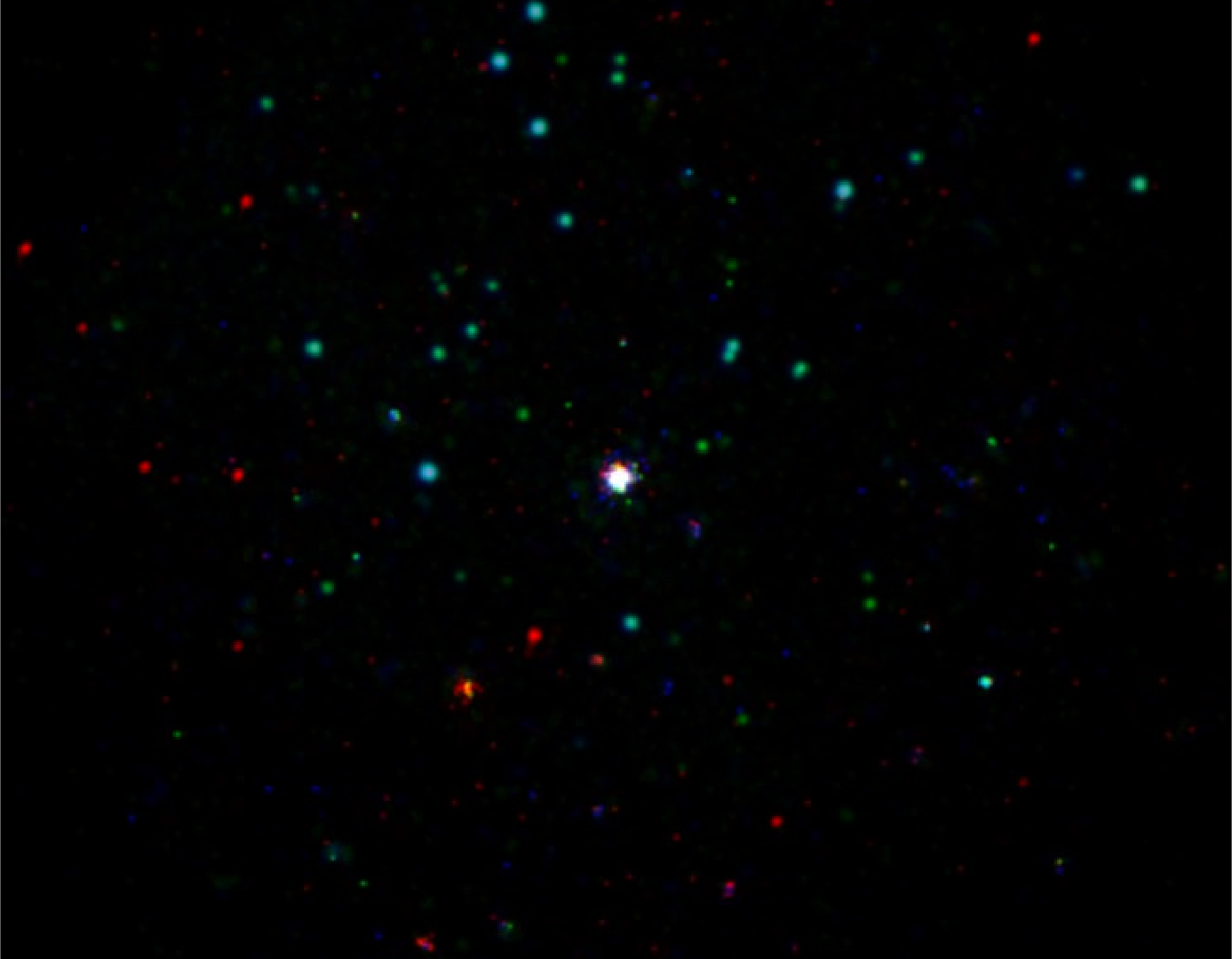
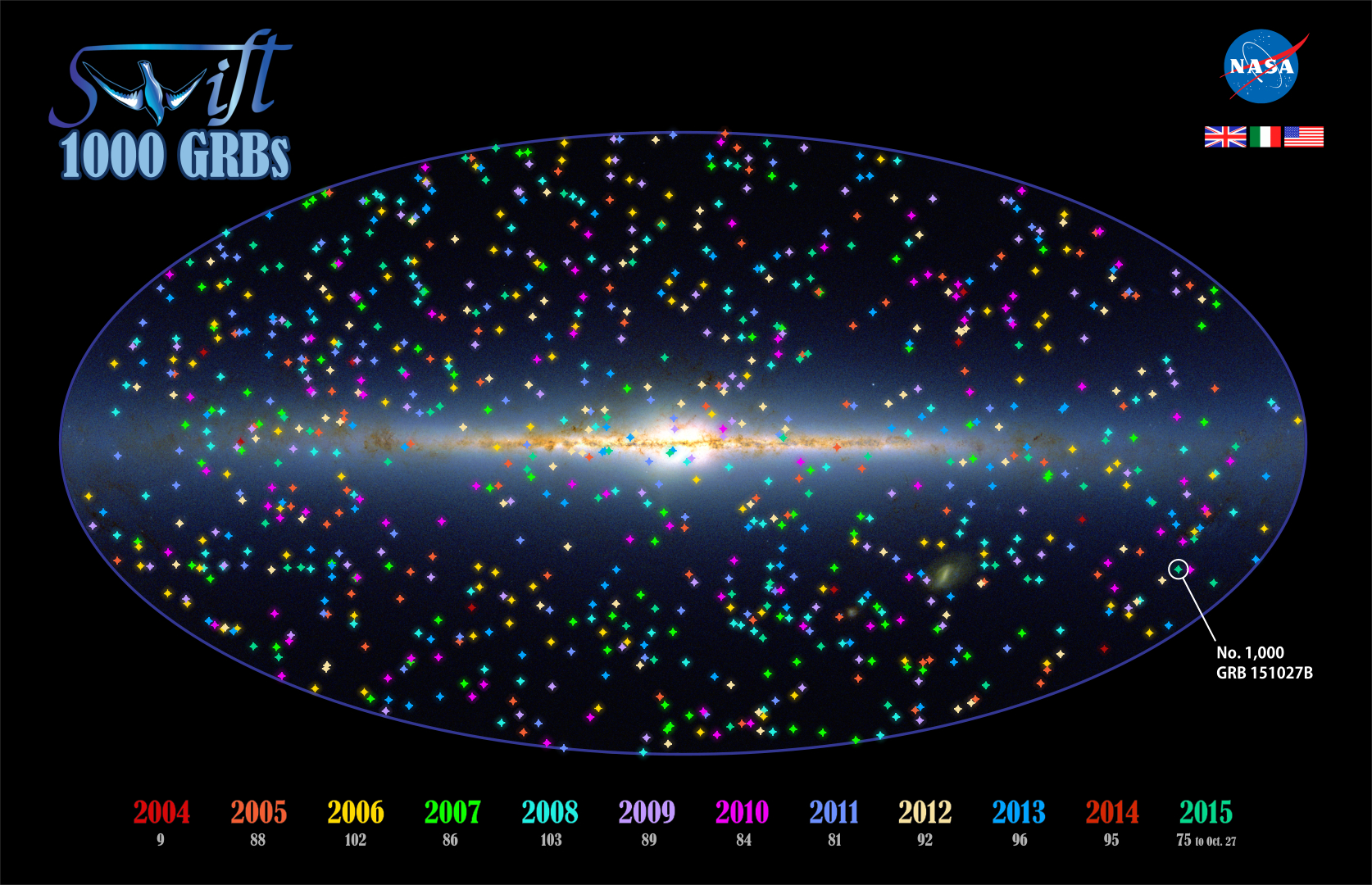

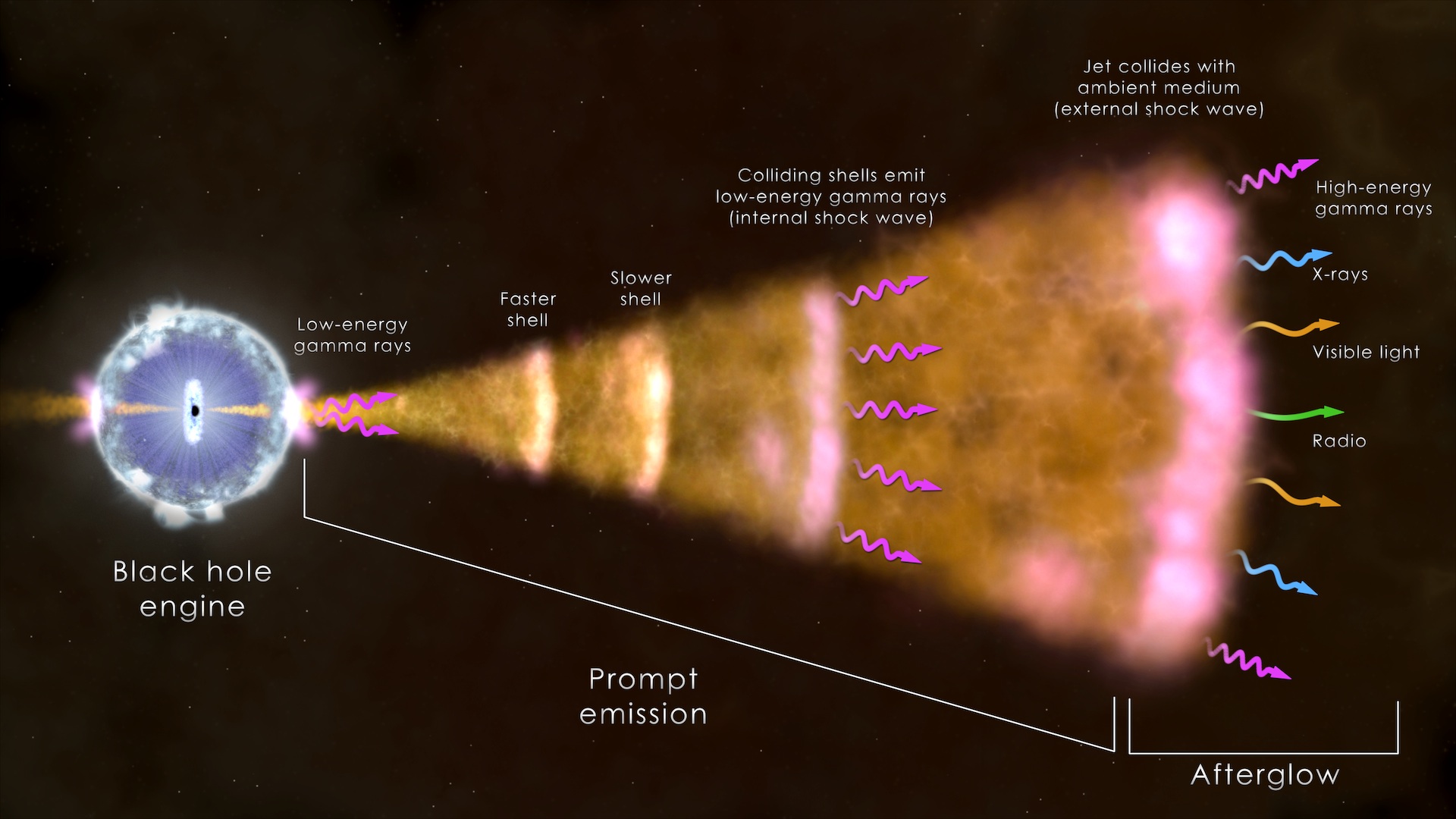
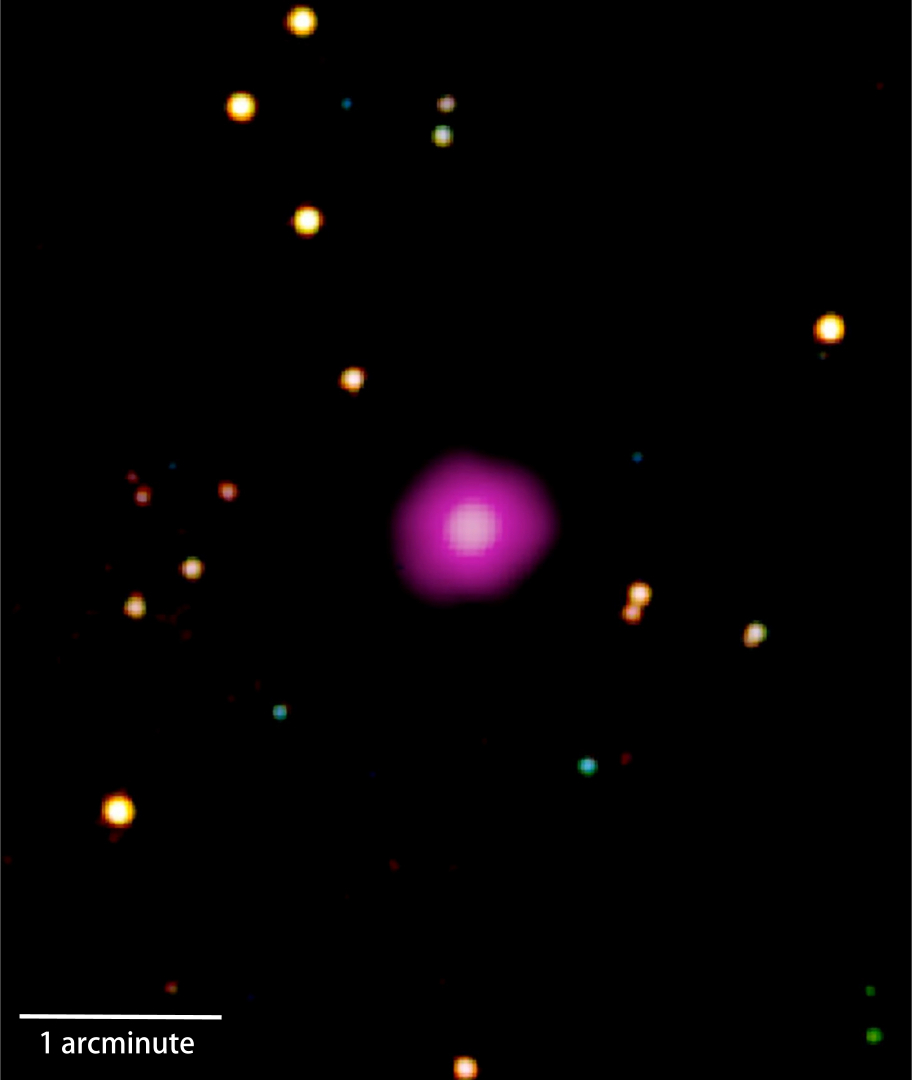
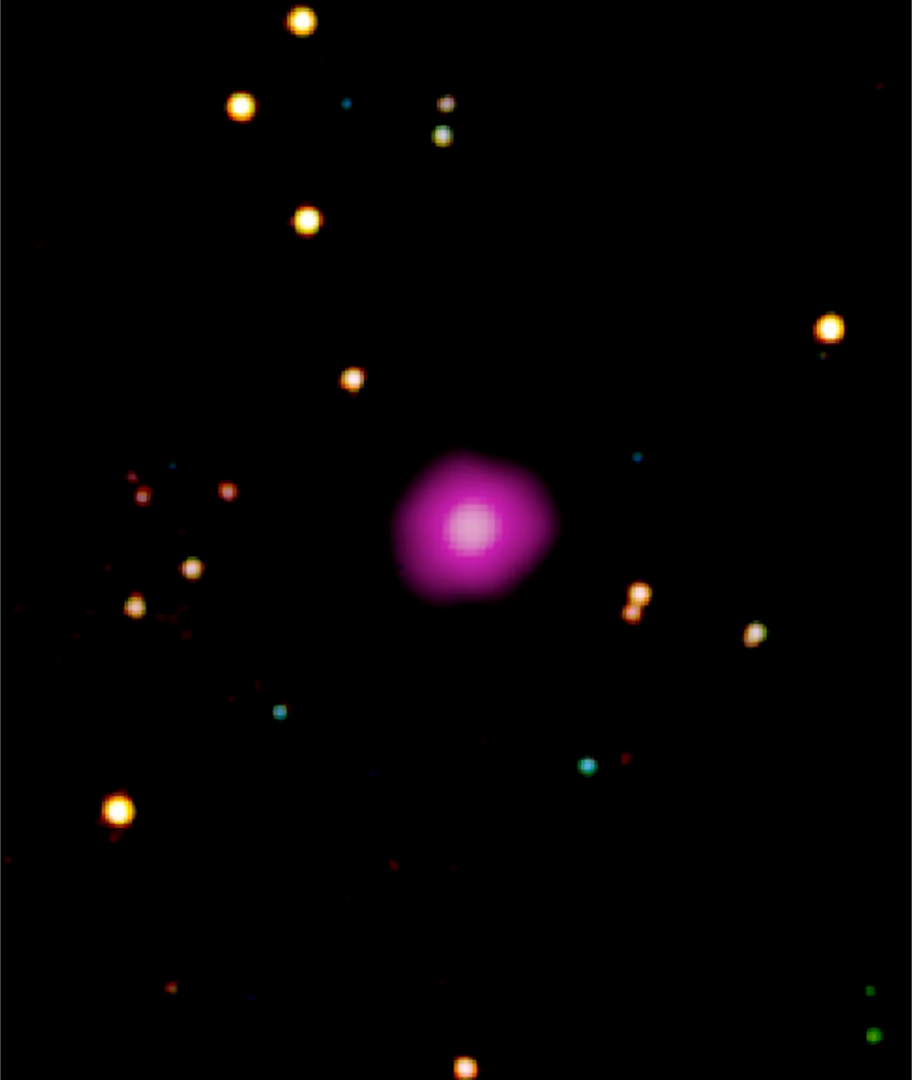
NASA's Swift Catches its 1,000th Gamma-ray Burst

A GRB is a fleeting blast of high-energy light, often lasting a minute or less, occurring somewhere in the sky every couple of days. Scientists are looking for exceptional bursts that offer the deepest insights into the extreme physical processes at work.
Shortly before 6:41 p.m. EDT on Oct. 27, Swift's Burst Alert Telescope detected GRB 1,000 as a sudden pulse of gamma rays arising from a location toward the constellation Eridanus. Astronomers dubbed the event GRB 151027B, after the detection date and the fact that it was the second burst of the day. Swift automatically determined its location, broadcast the position to astronomers around the world, and turned to investigate the source with its own sensitive X-ray, ultraviolet and optical telescopes.
Astronomers classify GRBs by their duration. Like GRB 151027B, roughly 90 percent of bursts are of the "long" variety, where the gamma-ray pulse lasts more than two seconds. They are believed to occur in a massive star whose core has run out of fuel and collapsed into a black hole. As matter falls toward the newly formed black hole, it launches jets of subatomic particles that move out through the star's outer layers at nearly the speed of light. When the particle jets reach the stellar surface, they emit gamma rays, the most energetic form of light. In many cases, the star is later seen to explode as a supernova.






Related
For More Information
Credits
Francis Reddy (Syneren Technologies): Lead Science Writer
Francis Reddy (University of Maryland College Park): Lead Visualizer
Francis Reddy (University of Maryland College Park): Lead Graphics
Eleonora Troja (University of Maryland College Park): Scientist
Neil Gehrels (NASA/GSFC): Lead Scientist
Scott Wiessinger (USRA): Illustrator
Francis Reddy (University of Maryland College Park): Lead Visualizer
Francis Reddy (University of Maryland College Park): Lead Graphics
Eleonora Troja (University of Maryland College Park): Scientist
Neil Gehrels (NASA/GSFC): Lead Scientist
Scott Wiessinger (USRA): Illustrator
Please give credit for this item to:
NASA's Goddard Space Flight Center
NASA's Goddard Space Flight Center
Short URL to share this page:
https://svs.gsfc.nasa.gov/12038
Mission:
Swift
This item is part of this series:
Astrophysics Stills
Keywords:
SVS >> X-ray
GCMD >> Earth Science >> Spectral/Engineering >> Gamma Ray
SVS >> Black Hole
SVS >> Gamma Ray Burst
SVS >> Astrophysics
SVS >> Space
SVS >> Swift
SVS >> Supernova
SVS >> Star
NASA Science >> Universe
GCMD keywords can be found on the Internet with the following citation: Olsen, L.M., G. Major, K. Shein, J. Scialdone, S. Ritz, T. Stevens, M. Morahan, A. Aleman, R. Vogel, S. Leicester, H. Weir, M. Meaux, S. Grebas, C.Solomon, M. Holland, T. Northcutt, R. A. Restrepo, R. Bilodeau, 2013. NASA/Global Change Master Directory (GCMD) Earth Science Keywords. Version 8.0.0.0.0
https://svs.gsfc.nasa.gov/12038
Mission:
Swift
This item is part of this series:
Astrophysics Stills
Keywords:
SVS >> X-ray
GCMD >> Earth Science >> Spectral/Engineering >> Gamma Ray
SVS >> Black Hole
SVS >> Gamma Ray Burst
SVS >> Astrophysics
SVS >> Space
SVS >> Swift
SVS >> Supernova
SVS >> Star
NASA Science >> Universe
GCMD keywords can be found on the Internet with the following citation: Olsen, L.M., G. Major, K. Shein, J. Scialdone, S. Ritz, T. Stevens, M. Morahan, A. Aleman, R. Vogel, S. Leicester, H. Weir, M. Meaux, S. Grebas, C.Solomon, M. Holland, T. Northcutt, R. A. Restrepo, R. Bilodeau, 2013. NASA/Global Change Master Directory (GCMD) Earth Science Keywords. Version 8.0.0.0.0
